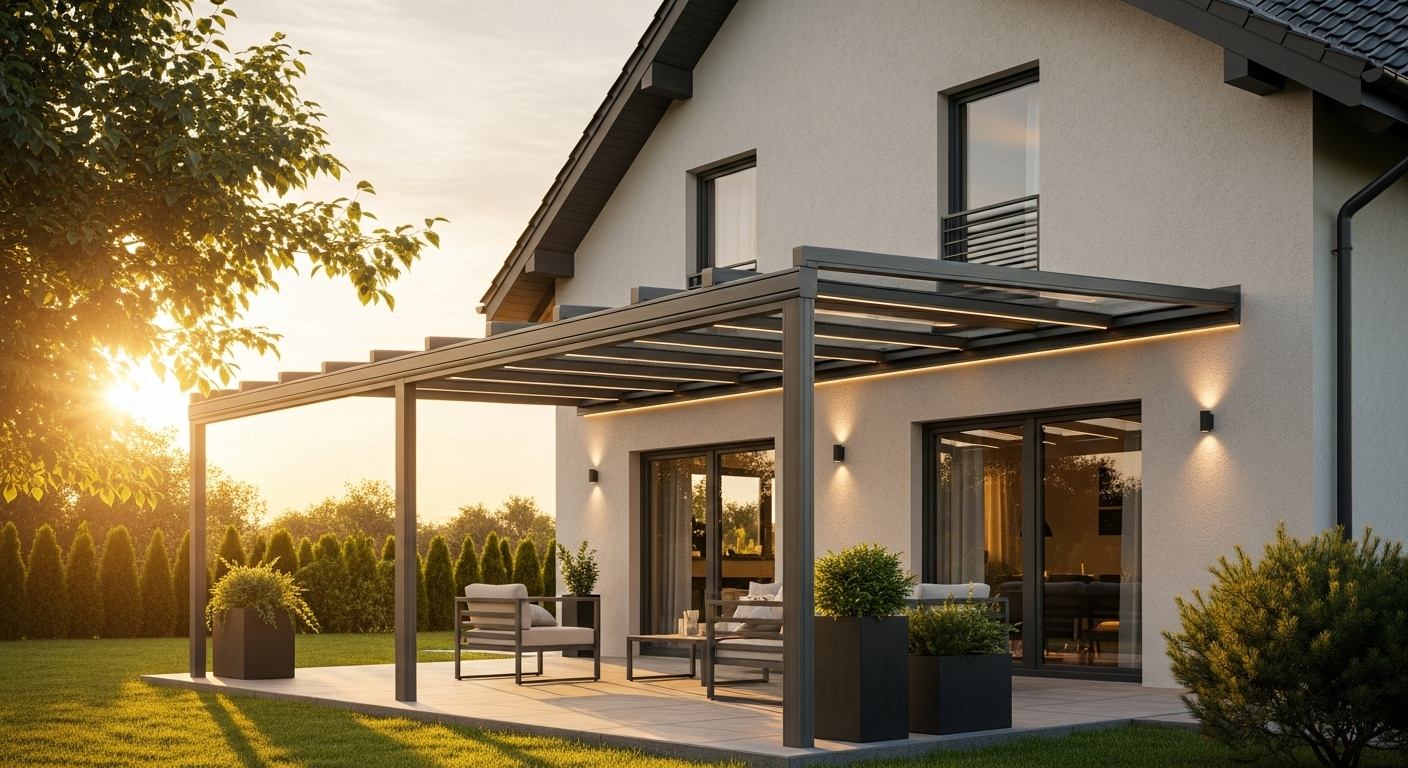Enhancing Your Outdoor Living Space with Shade Structures
Outdoor shade structures have become increasingly popular additions to patios and backyards, offering a blend of aesthetic appeal and functional benefits. These versatile installations provide partial shade, define outdoor areas, and can significantly enhance property value. Whether you're considering a simple wooden design or a more elaborate pavilion-style structure, understanding the options, costs, and considerations involved helps ensure you make an informed decision that suits your needs and budget.

What Is a Pergola Pavilion?
A pergola pavilion represents an evolution of the traditional pergola design, combining open-air elements with more substantial roofing coverage. While classic pergolas feature open slatted roofs that allow filtered sunlight and air circulation, pavilions typically incorporate solid or partially covered roofs that provide enhanced protection from weather elements. These structures create defined outdoor rooms perfect for dining, entertaining, or relaxation. Pavilion-style pergolas often include corner posts supporting a roof framework, which can be customized with various materials including wood, vinyl, aluminum, or composite materials. The increased coverage makes them particularly suitable for regions with unpredictable weather patterns, offering a comfortable outdoor space throughout more of the year.
Affordable Patio Roofing Solutions
Budget-conscious homeowners have numerous options when seeking affordable patio roofing. Material selection significantly impacts overall cost, with pressure-treated pine representing one of the most economical wood choices, while cedar and redwood offer durability at moderate price points. Aluminum and vinyl pergolas provide low-maintenance alternatives that can be cost-effective over time despite higher initial investments. DIY installation can substantially reduce expenses, though professional installation ensures structural integrity and compliance with local building codes. Prefabricated kits offer another affordable route, providing pre-cut materials and detailed instructions that simplify the construction process. Additionally, starting with a basic design and adding features like retractable canopies, lighting, or climbing plants over time allows homeowners to spread costs while gradually enhancing their outdoor space.
Understanding Patio Roofing Prices in Your Area
Patio roofing costs vary considerably based on geographic location, material selection, size, and complexity of design. Regional factors such as labor rates, material availability, and local building requirements all influence final pricing. Urban areas typically see higher installation costs compared to rural regions due to increased labor expenses and permit fees. Climate considerations also affect pricing, as structures in areas with heavy snow loads or high wind exposure require more robust engineering and materials. Local competition among contractors can create pricing variations, making it worthwhile to obtain multiple quotes from reputable providers. Seasonal timing may also impact costs, with some contractors offering reduced rates during slower winter months. Researching local market conditions and consulting with several contractors provides realistic expectations for project budgets in specific areas.
| Structure Type | Material Options | Estimated Cost Range |
|---|---|---|
| Basic Pergola | Pressure-treated pine | $1,500 - $3,500 |
| Standard Pergola | Cedar or composite | $3,000 - $8,000 |
| Pavilion Style | Wood with solid roof | $5,000 - $15,000 |
| Premium Pavilion | Aluminum or vinyl | $8,000 - $25,000 |
| Custom Design | Mixed materials | $15,000 - $40,000+ |
Prices, rates, or cost estimates mentioned in this article are based on the latest available information but may change over time. Independent research is advised before making financial decisions.
Patio Roof Options for Seniors
Seniors often seek patio roofing solutions that prioritize accessibility, safety, and low maintenance. Covered pergolas or pavilions with solid roofing provide reliable protection from sun exposure, which becomes increasingly important for skin health and comfort as individuals age. Slip-resistant flooring materials beneath the structure enhance safety, while adequate lighting ensures visibility during evening hours. Motorized retractable canopies or louver systems allow easy adjustment of shade and ventilation without physical strain. Design considerations should include level access without steps, adequate space for mobility aids, and comfortable seating arrangements. Weather protection enables seniors to enjoy outdoor spaces regardless of conditions, promoting physical activity and social engagement. Additionally, structures with integrated ceiling fans improve air circulation during warmer months, while optional heaters extend usability into cooler seasons, maximizing the investment throughout the year.
Patio Roofing with Slats: Benefits and Considerations
Slatted patio roofing represents the traditional pergola design, offering distinctive advantages for outdoor spaces. The open slat configuration creates dappled shade patterns that provide sun protection while maintaining an airy, open atmosphere. This design promotes natural ventilation, reducing heat buildup compared to solid roofing options and creating comfortable spaces even during warm weather. Slats can be oriented to optimize shade based on sun angles throughout the day and seasons. The spacing between slats can be customized, with narrower gaps providing more shade and wider spacing allowing greater light penetration. Slatted roofs also support climbing plants like wisteria, grapevines, or jasmine, which enhance shade coverage while adding natural beauty and fragrance. However, slatted designs offer limited protection during rain, making them best suited for climates with predominantly dry conditions or as supplementary structures alongside covered areas. Regular maintenance including cleaning debris from slats and treating wood preserves appearance and longevity.
Choosing the Right Structure for Your Space
Selecting an appropriate outdoor shade structure involves balancing aesthetic preferences, functional requirements, and budget constraints. Consider the primary purpose of the installation, whether for dining, lounging, or creating a garden focal point, as this influences size and features. Evaluate sun exposure patterns throughout the day to determine optimal placement and roof style. Material selection should account for local climate conditions, maintenance willingness, and desired longevity. Wood offers natural beauty but requires periodic maintenance, while aluminum and vinyl provide durability with minimal upkeep. Structural dimensions should complement existing architecture and landscape proportions, avoiding designs that overwhelm smaller yards or appear undersized in expansive spaces. Local building codes and homeowner association regulations may dictate design parameters, setback requirements, and permit procedures. Professional consultation can help navigate these requirements while ensuring structural integrity and proper installation that withstands local weather conditions for years of enjoyment.




